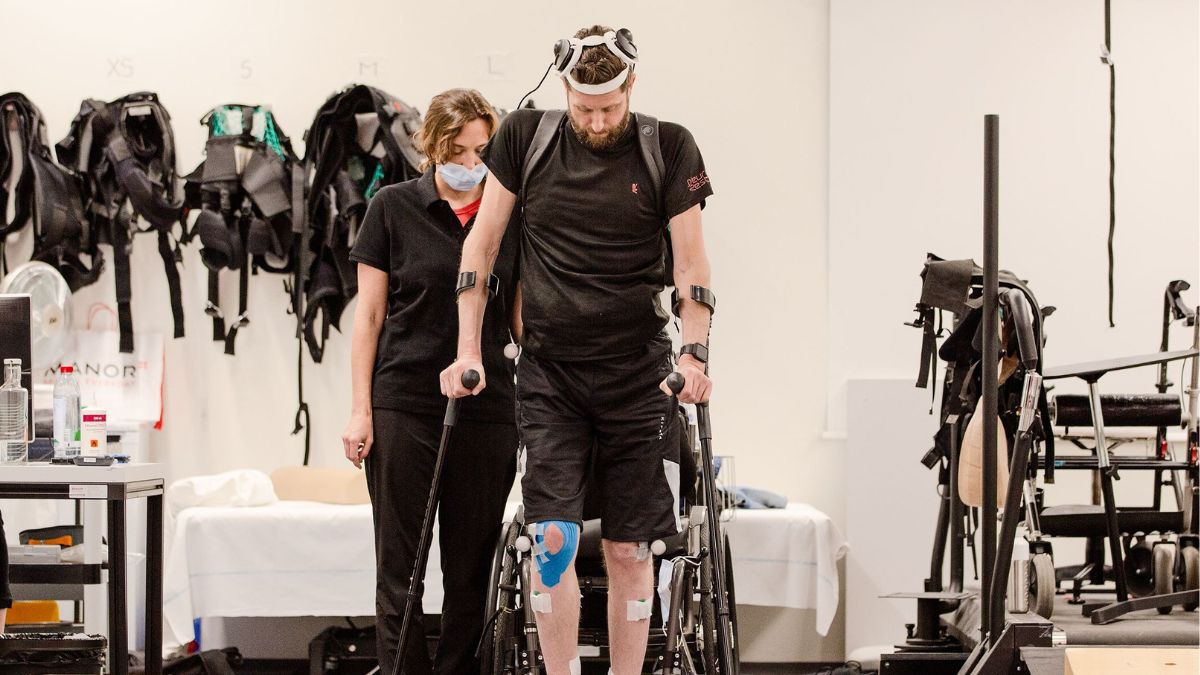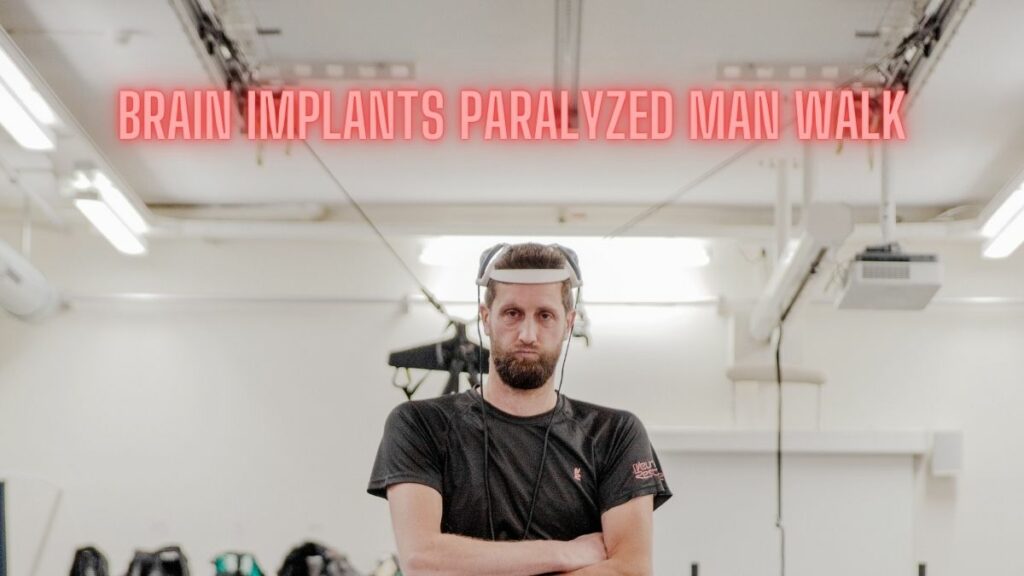A paralyzed man has been able to walk just by thinking about it, thanks to electric brain implants. This is a medical first, and the man says it has changed his life. The electronic implants in his brain and spine allow him to communicate wirelessly with his lower extremities. Although the technology is still in the testing phase, it has been hailed as “very encouraging” by a renowned spinal charity in the United Kingdom.
Paralyzed Man Is Able To Walk Again Because Of Brain Implants
According to a study released on Wednesday, a Dutch man who had a spinal cord injury in a bike accident a decade ago is now able to walk again after having stimulators inserted on his brain and spinal cord.
In the past, patients like Gert-Jan Oskam have been able to stand and walk with the aid of spinal cord stimulation, but only after manually activating the device. The new technique allows him to visualize walking before he really does it.
Grégoire Courtine, who helped lead the study, said that stimulating both points restores communication between the brain and the part of the spinal cord that controls leg movement. This makes walking feel more natural.

“It was quite science fiction at the very beginning, but it became true today,” said Dr. Jocelyne Bloch, co-leader and neurosurgeon at the University of Lausanne in Switzerland.
Here are some links to current news stories that we’ve written about on our site:
- After 6 Years, Dad Of Kayla Unbehaun Speaks Out About His Missing Daughter
- Why Are Flags Flying At Half-Staff In Ohio Today? Here Is What You Should Know
Oskam, 40, can now walk a short distance with crutches, even when the stimulators are turned off. This is likely due to the fact that his spinal cord was not entirely severed. “Depending on the day,” he can walk as far as two football fields in them.
On a media teleconference on Tuesday, he stated, “For 12 years, I have been trying to get back on my feet.”
The ability to walk at will confers freedom, especially within one’s own four walls. Oskam noticed last week that he needed to paint something in his new home.
“There was nobody to help me, so I took the walker and did it myself as I was standing,” he explained.
He was under the control of the stimulator, which was implanted in his spinal cord. Now, with devices in both his brain and spinal cord, he can control the stimulation with his thinking.
The stimulators have only been tested on Oskam so far, but experts are optimistic that they will one day allow a much larger number of people with spinal cord injuries and strokes to walk again. Bladder control, blood pressure, and perspiration are all aided by standing. You can see the official tweet by Reuters below.
https://twitter.com/Reuters/status/1661855914415251458
In the 1980s, scientists learned that stimulators might restore mobility in patients with specific conditions. Multiple groups, including Courtine’s, have spent the last decade or so studying the connections between the brain and muscles in order to optimize the placement of stimulators.
This new study is the first to stimulate both the spinal cord and the brain, restoring normal communications that had been cut off by his injury. The researchers added that once the connections were made again, the weak signals Oskam’s body was sending were strengthened, allowing him to move even when the stimulators were switched off.
“The more he thinks about the movement, the more the amplification of the stimulation increases,” said team member Guillaume Charvet, a researcher at France’s atomic energy commission.
Add serveupdate.com to your bookmarks if you want to read similar articles in the future.




